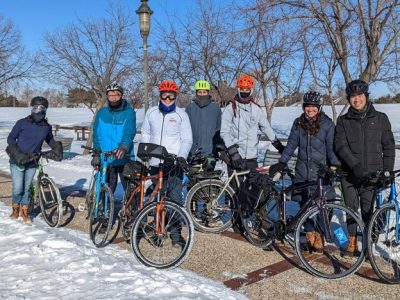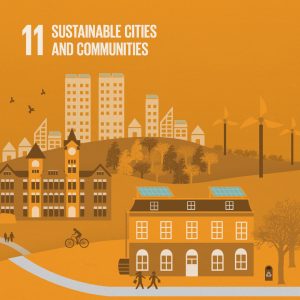By Alicia Valenti.
In today’s world, dire articles about the speed and effects of climate change seem inescapable, and global warming can feel like such an insurmountable challenge that any effort to mitigate it is futile. Our home communities–whether you’re in Alabama or Alaska, Birmingham or Boston–are a great place to begin working toward a more sustainable future.
My interest in sustainability began when I moved to Auburn from a small town in the Florida panhandle. Growing up, you had to have a car to go just about anywhere. Living on campus, for the first time in my life I was able to walk to hang out with my friends, go to restaurants, and so much more. However, because I didn’t have a car during my freshman or sophomore year, I also learned how difficult it can be to take care of daily needs like groceries if you can’t walk, bike or bus to get them. Even once I brought a car to campus my junior year, I found that with my lack of navigational ability, the stress caused by traffic, and the high cost of gas (at least for a college student without an income), driving caused far more trouble than it was worth. I became notorious in my friend group for saying things like “Why would we drive? It’s only a 30-minute walk and it’s gorgeous out!” What started as an effort by a poor college student trying to save money turned into a worldview that would become central to who I am as a person.
College campuses are in fact one of the best places to introduce people to “car-light” or car-free lifestyles. (A car-light lifestyle is one in which you may not own a car or if you do, you drive it very little, instead biking, walking and taking transit whenever possible–if you ever lived on Auburn’s campus and couldn’t be bothered to walk half a mile to your car to go downtown, you were probably living a car-light lifestyle.) With limited real estate, colleges must prioritize educational and residential buildings over parking lots, and students are encouraged to bike or take the bus to class. High-density residential uses (aka dorms and college apartments) mean that all your friends are close by, and there are enough people to support plentiful restaurant and retail options, like Auburn’s beloved Momma G’s, Toomer’s Drugs and of course, the infamous Skybar. The parking that is provided comes at a steep price, and while some may see the fee for a semester parking pass as a cash grab, it’s actually still well below the opportunity cost of precluding other use of the land. I’ve loved seeing Auburn add more housing and businesses in and near downtown–coupled with investments in infrastructure for biking and walking while worrying less about parking, this helps create a more sustainable community.
I graduated from Auburn in May 2015 with a Bachelor’s in Public Administration. At the time, I wasn’t sure how I wanted to apply my degree beyond using it to help build a better world. As a 22-year-old with a lot of ambition and very little idea of where to direct it, I semi-spontaneously decided to move to Portland, Oregon. I was drawn in by its reputation as a walkable, bikeable city with high-quality public transit. It was there that I saw how high-density land use and supportive transportation options can make a city more fun and attractive, and I realized I could pursue a career to help make this a reality in more places. With that in mind, I headed to Minneapolis to obtain a Master’s degree in Urban and Regional Planning from the University of Minnesota Humphrey School of Public Affairs, graduating in 2018.

Group bike ride in Minneapolis, January 22, 2022–it was about 9 degrees out with a “feels like” of -2. (Credit: Author)
I now work as a transit planner, helping transit agencies and other government entities throughout the Midwest and across the country to implement investments like bus rapid transit (more info on BRT in the US here), modern streetcar, and light rail. Beyond talking the talk, I like to walk the walk, too. I am a regular transit rider and a year-round cyclist—yes, even when it’s snowing or -10 degrees outside—and I often can’t remember the last time I drove my car. In my free time, I help advocate for sustainable land use and transportation, whether it’s by emailing my elected officials about the need for bus lanes, submitting comments in favor of proposed apartment buildings or transit projects, or even just going on group bike rides to show the popularity of biking in the Twin Cities.
There are easy ways to help create a more sustainable city or community wherever you may be. Try substituting one car trip per week with walking, biking or transit, and if that goes well, see if you can use your car even less. If you live with someone and you both have cars, try carpooling to work or for other errands. If reducing your car use doesn’t feel realistic, you can still support bike and transit options for others: after all, for every person who bikes or rides the bus instead of driving, that’s one less car you have to worry about on the road. If you see that a new apartment building is proposed, you can write a short email or comment showing your support because this type of higher-density land use requires less resources than sprawling single-family homes and big box stores with expansive parking lots. These are just a few examples of actions you can take, but consider what you’re passionate about and use that to determine what changes will work in your life.
Post contributed by Alicia Valenti, Senior Transit Planner
Learn about the SDGs & AU and Auburn’s contributions related to this post:





